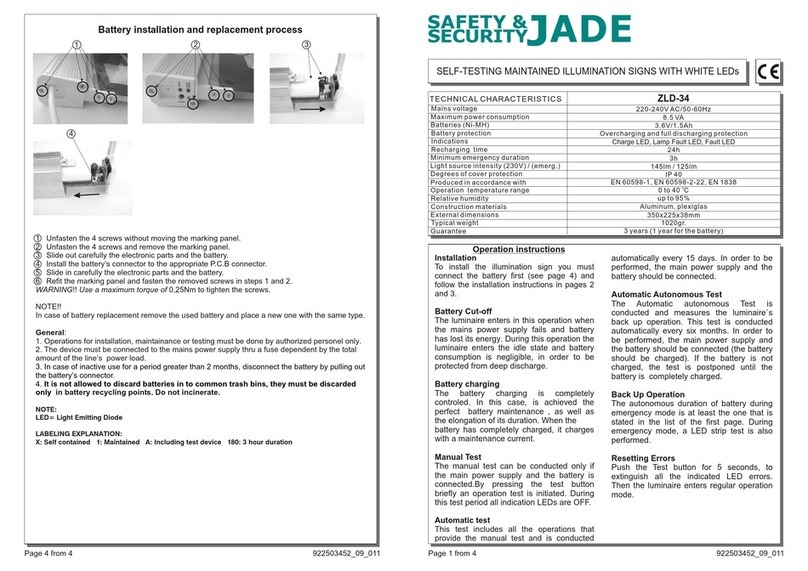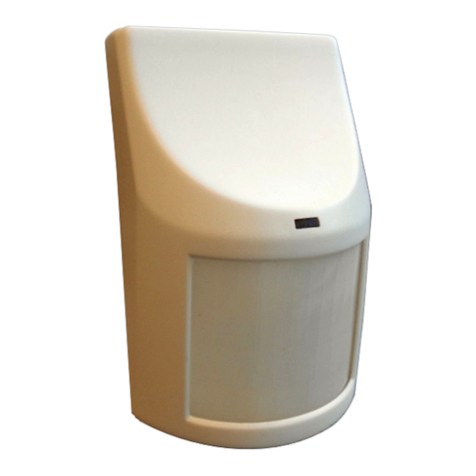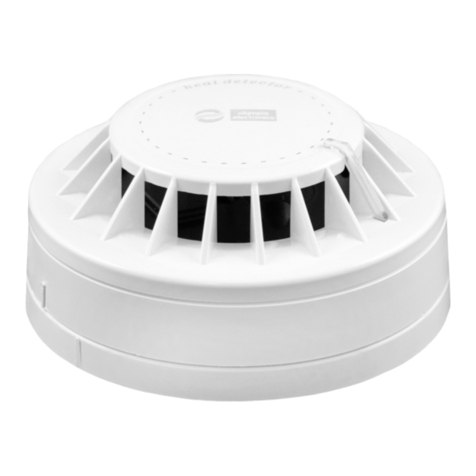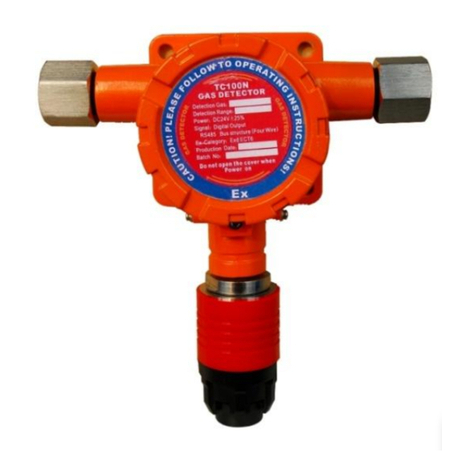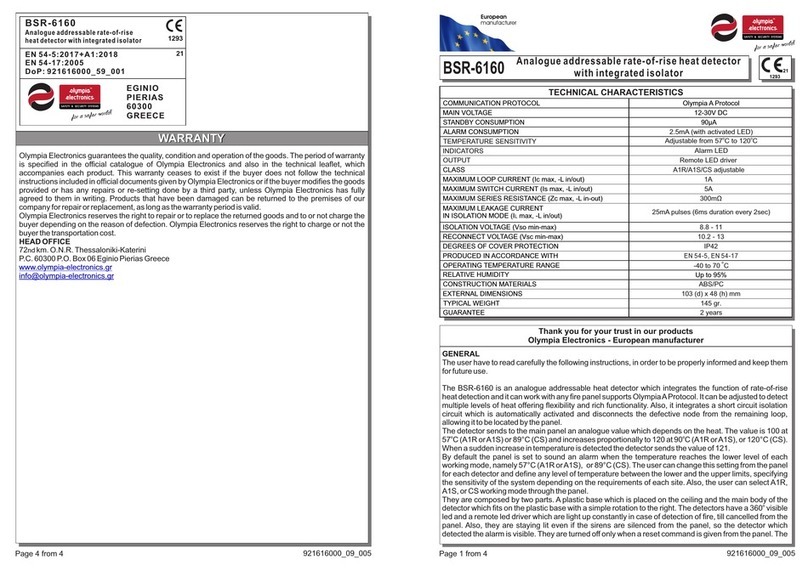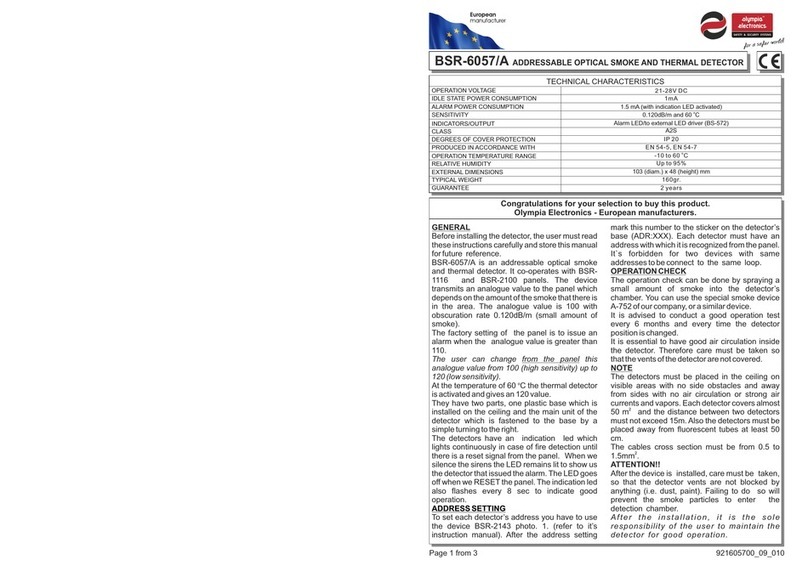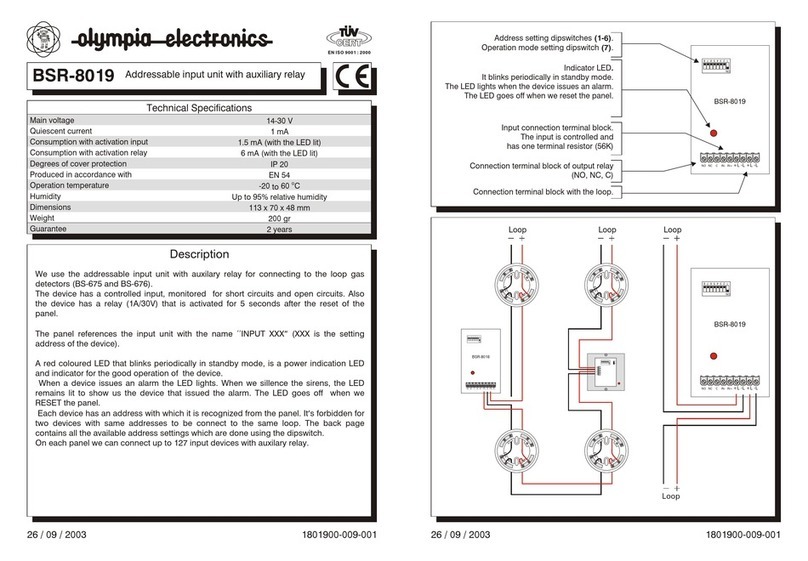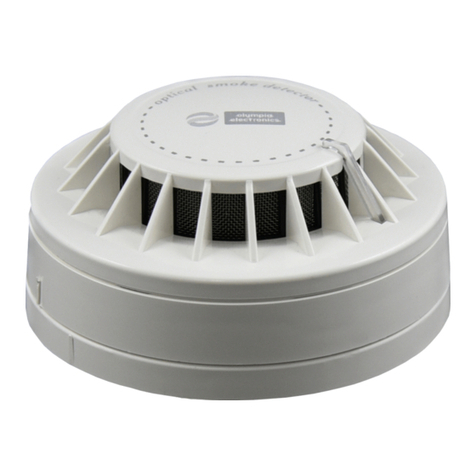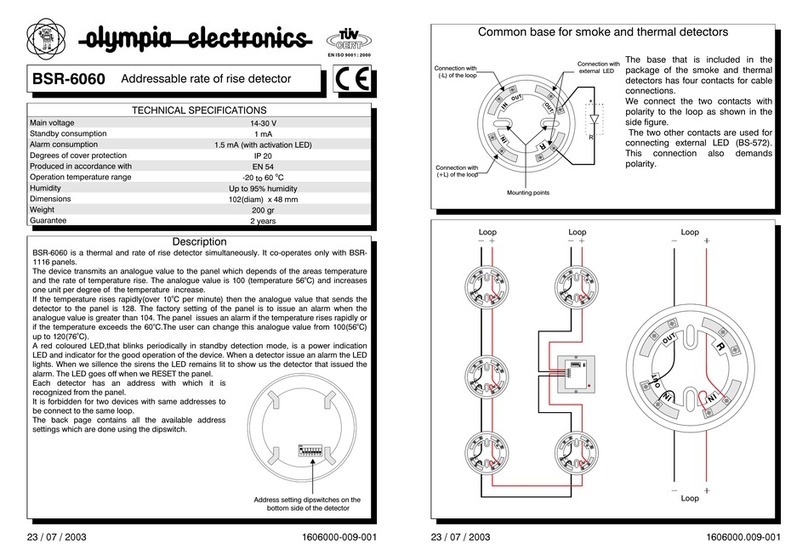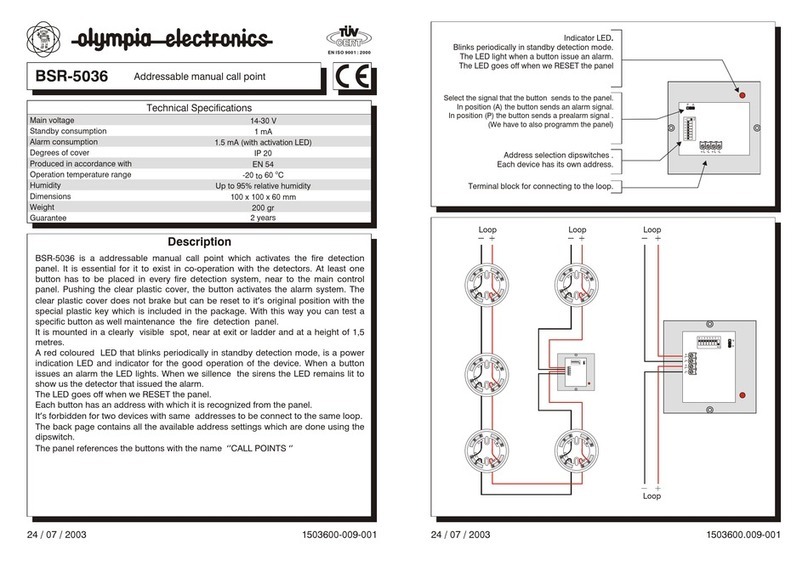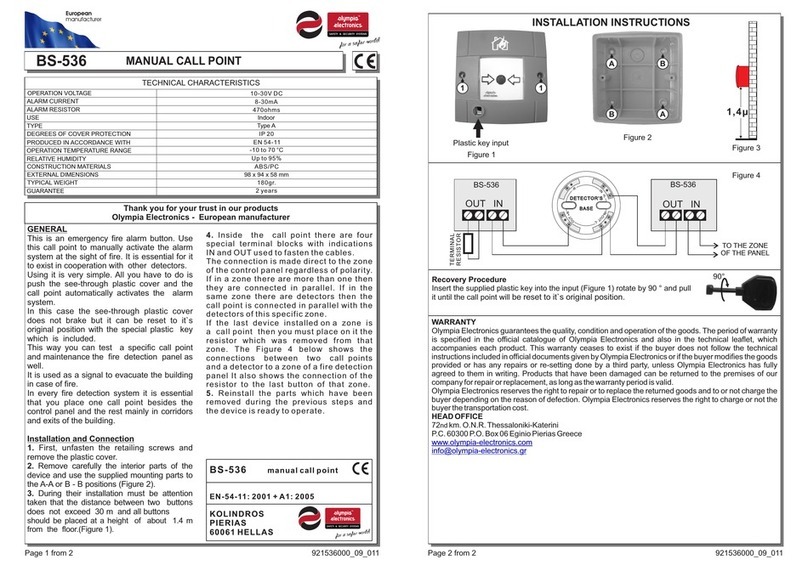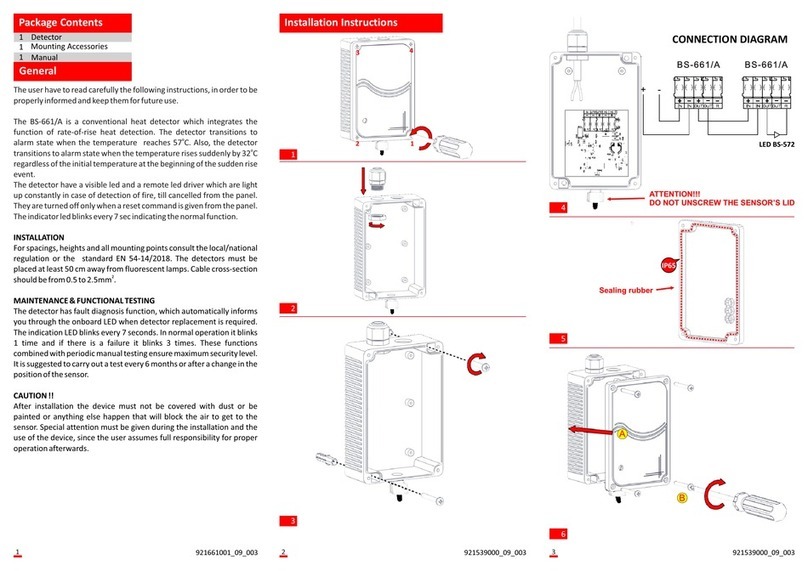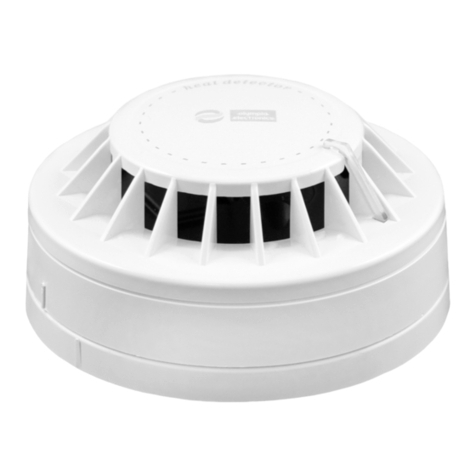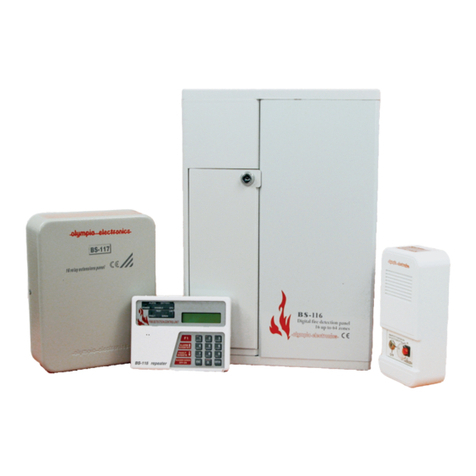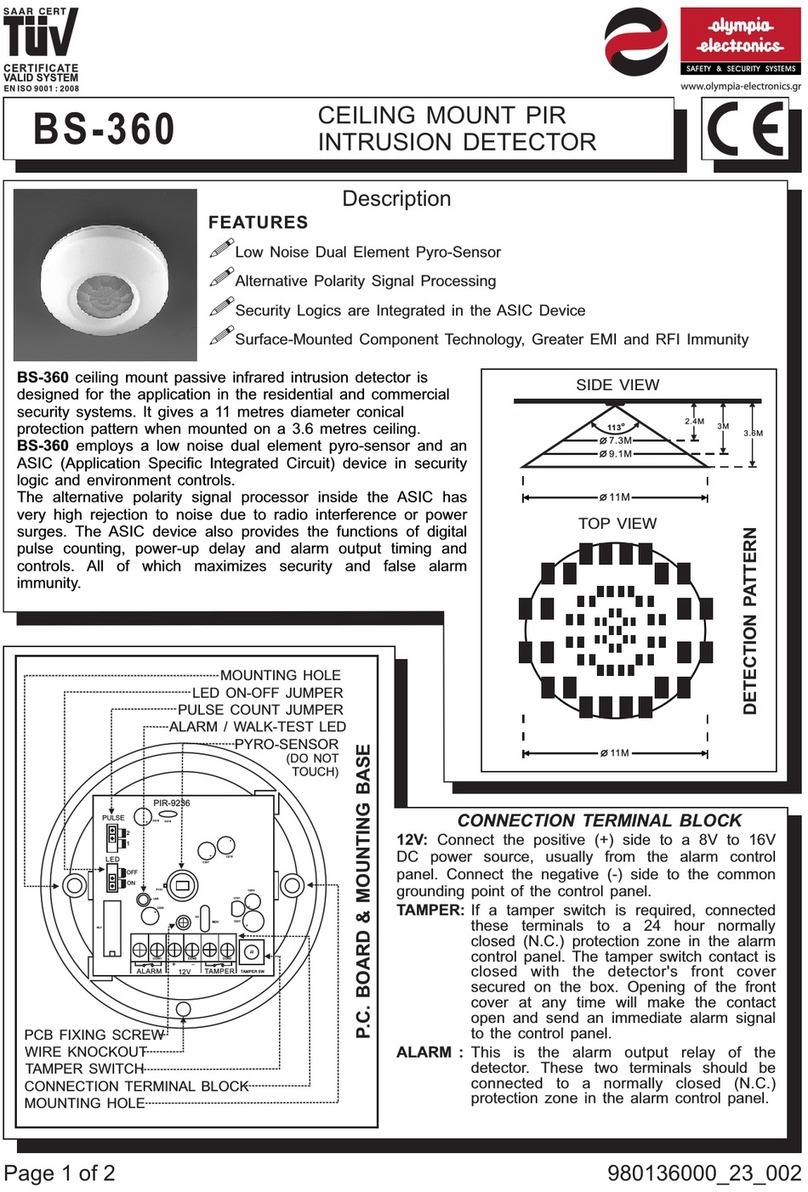Glass-break detector
Installation
Installation shall only be undertaken by technicians holding a certificate
issued by an authorized distributor. The detector can be installed on a flat
wall or in the corner of a room. Within the detection range of the PIR sensor
avoid the presence of objects rapidly changing in temperature, such as
electrical heaters, gas appliances etc. Moving objects with a temperature
close to that of humans such as curtains moving above a radiator, and pets
should also be avoided. Detectors should not face windows or spotlights or
be near fast-moving air e.g. near ventilation fans or open windows or doors.
Because of its sensitivity to air pressure changes and sounds it should not
be located close to air conditioning or ventilation outlets. There should be
no sources of vibration or audible sounds in the protected area. There
should also be no obstacles blocking the detector’s “view” of the protected
area. Keep the detector away from metal objects which could interfere with
radio communication.
Warning: The most frequent cause of false alarms is bad detector-
positioning
Do not arm this detector if there are any people or pets moving within the
protected area.
1. Open the detector cover by pressing the tab and disconnect the
cable to the module located in the front cover.
2. Remove the internal PIR module held by an internal tab.
3. Punch screw holes through the rear plastic cover. At least one
screw should penetrate the tamper-sensitive section.
4. Screw the rear cover to the wall, about 2 metres above the floor
(vertically, with the tab down).
5. Return the PIR module to its original place.
6. Leave the battery disconnected and the cover open and then
follow the control panel or receiver manual. The basics of enrollment
are:
a. Enter enrollment mode on the control panel by keying in “1” in
Service mode.
b. Install a battery in the PIR detector to activate its enrollment.
c. Install a battery in the glass-break detector and then connect its
cable to the PIR module. This will activate its enrollment to the
next vacant address in the control panel. This means that the
glass-break detector enrolls after the PIR does.
d. Exit enrollment mode by pressing “#”
To enroll a detector after having already connected batteries, first
disconnect the batteries, and press and release the tamper sensor to
discharge any remaining charge to ready the device for enrollment. After
installing batteries into the detector, allow two minutes for stabilisation.
During this period the LED is continuously lit.
PIR module DIP switches
NORM / HIGH: selection of immunity to false alarms. The NORM position
combines very good immunity with fast sensor reactions. The HIGH
position gives increased immunity with a slower reaction time and is only
used for problematic installations.
INS / DEL. DEL provides entrance & exit delays for detectors installed in a
building entrance. INS allows the detector to instantly trigger alarm
activation if the control panel is armed. This DIP switch (INS/DEL) only has
an effect if the detector has a natural reaction assigned to its address in
the Oasis control panel. It also has no effect when used with a UC-8x or
AC-8x receiver.
Glass-break module DIP switches
DEL / INS selects the reaction of the control panel if glass-breaking is
detected. DEL provides entrance & exit delays and is recommended for
detectors installed near a building’s entrance door. INS allows the detector
to instantly trigger alarm activation if the control panel is armed. This DIP
switch (INS/DEL) only has an effect if the detector has a natural reaction
assigned to its address in the Oasis control panel. It also has no effect
when used with a UC-8x or AC-8x receiver.
PIR / GBS: This selects whether PIR or glass-break triggering is shown by
the LED. Changing this setting only has an effect during the first 15 minutes
after closing the cover (test mode).
Note: Although both detectors are located in one housing, they do act
independently. Each one has its own address. Each one also has its own
selectable reaction via DIP switches in the detector or in SERVICE mode
on the control panel.
